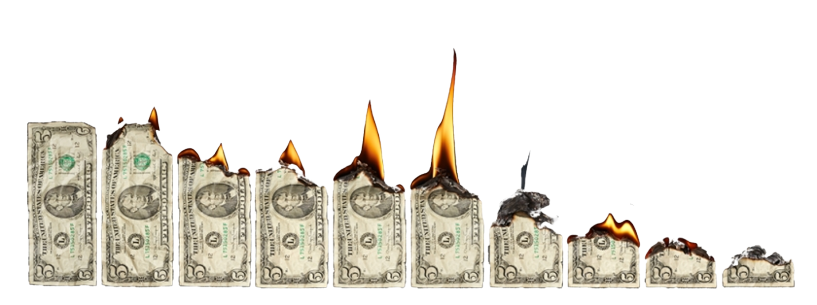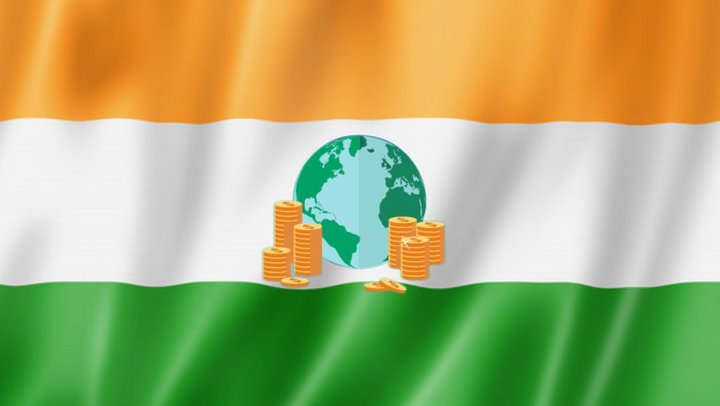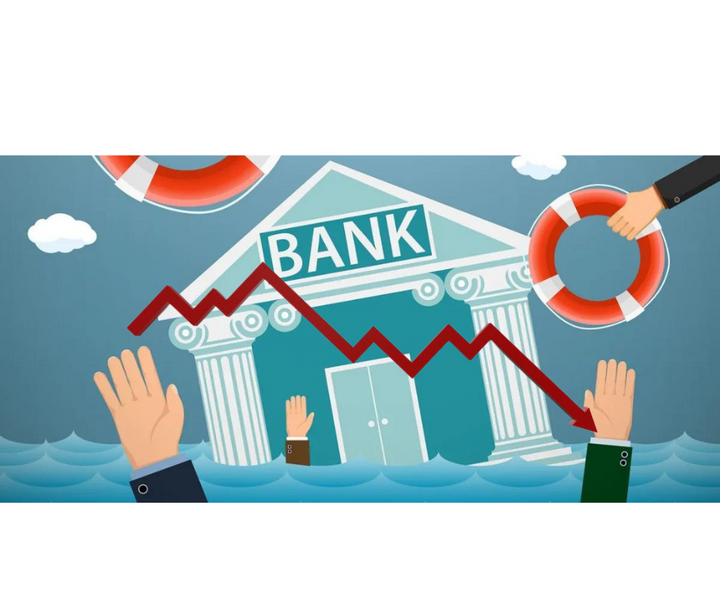Hyperinflation: a story of despair.

Driven by our last Helpful Terms article "Inflation: characteristics and its bond to the stock market", I am writing this one about the definition of very high inflation rates along with historic examples that shocked the world.
Generally, inflation is the rate that describes the increase (or decrease = deflation) of goods and services that an average consumer buys, on a year-to-year basis (for further information click here: Inflation).
Hyperinflation occurs when inflation is increasing at a rapid and uncontrolled rate. Many economists argue that anything above 50% inflation rate per month is considered hyperinflation, while others set the bar higher or lower.
One thing is for sure, the occurrence of hyperinflation has nothing but destruction to cause.
What causes hyperinflation ?
Hyperinflation is ,as in the case of just inflation, measured by the changes in the Consumer Price Index (CPI) or in the Producer Price Index (PPI). These rapid changes usually occur due to two main reasons.
- Aggressive Expansionary Monetary Policy: happens when Central Banks that control the amount of money in circulation pour too much money in the economy. Authorities usually print more money when they feel the need to support the economy during recession or depression periods. The problem with aggressive expansionary monetary policies is that these additional funds are not backed by real economic growth, thus resulting in the devaluation of the currency. In essence, citizens and businesses end up with a lot more money at hand and in result push prices up, creating a vicious cycle of further inflation rate spikes.
- Demand-Pull Inflation: occurs when the total demand for goods and services (or in economic terms, "aggregate demand") is much higher than the total supply ("aggregate supply"). This results in sky-high prices in goods and services because there are not enough of them to fill out this aggregate demand - aggregate supply gap. These shortages create a market, where inflation rates boom and prices rise sharply.
Historic Examples of Hyperinflation
As it was stated earlier, hyperinflation is disastrous for an economy, but for this exact reason Central Banks are very cautious to prevent such an event from happening. Despite their efforts though, there have been times in history that countries had to face rapid, out-of-control price increases.
- Greece - 1944: During the World War II, Greece borrowed and printed huge amounts of money to fund its military needs against the Nazis. Already, by 1940 Greece's economy had a 790 million drachmas deficit, as the primary sector of the economy was non-existent and every financial resource was diverted to military expenditures. In 1941, the German forces achieved to invade Greece resulting in a three and a half year occupation of the country. With the fall of the Nazi's empire plans, the Greeks managed to take once again the control of many parts of the county on October, 1944. During the first two months of their freedom,one of the most inflationary periods of history occurred. A combination of previous compounded debt and an inefficient and severely damaged primary sector resulted in an 13800% inflation rate in October and 1600% in November. Yes you read that right, prices doubled every 4 to 5 days leading the country to extreme poverty conditions, resulting in a civil war that even worsened the situation in the country.
- Germany - 1923: In 1914, the year that the World War I started, Germany decided to abandon its currency's connection to gold and print a new one called Papiermark. This transition from the Goldmark to the Papiermark, marked a new economic era for the country. At that time, 1 US dollar was equal to 4.2 german Papiermark, while in August 1923 this exchange rate had skyrocketed to 1 USD to 1,000,000 Papiermark. But this was not the end, until October of the same year inflation rate kept rising reaching 29500%. The Weimar Republic kept printing money to fund its military activities,boosting inflation with the currency rate falling with it. During this time period, psychologists observed a psychological phenomenon called "Zero Stroke", when citizens needed billions of German marks for their day-to-day transactions and thus making their daily life unbearable. Prices doubled every 3 to 4 days and authorities decided to issue a redenomination, replacing Papiermark with the Rentenmark, with an exchange rate of 4.2 Rentenmarks for every US dollar. Many historians and economists agree that this period's economic disaster was an important factor of the rise and domination of Adolf Hitler and the Nazis.
- Yugoslavia - 1994: Starting in early 70's Yugoslavia's governments was falling into countless mistakes of governance, economic management and political instability. The following two decades the country was constantly borrowing money from other countries and organizations while a generalized export embargo was imposed to it. This combination of events furtherly worsened the situation, leading the country to accept economical help from the International Monetary Fund (IMF) in 1989. Numbers tell the same story as well, in 1990 1100 businesses went bankrupt resulting in 600,000 job losses out of the total 2,700,000 workforce available. In addition, authorities kept printing money to boost the economy and inflation as well. The peak of the dispair happened in January 1994, when inflation reached 313,000,000% and prices doubled every 34 hours. Despite the out-of-control economic environment the country kept introducing and replacing its currency "dinar", with currencies such as "the New Dinar", "the New New Dinar" and "the Super Dinar" in order to control the economy, but everyone of them was essentially useless, as citizens and businesses used the german mark for their transactions.
- Zimbabwe - 2008: in 1980 Zimbabwe reclaimed its freedom and printed its own currency, the Zimbabwean dollar (Z$), with a valuation of 1 Z$ = 1.25 $. Governance mismanagement and political corruption, though, caused a continuous recessionary economy that heavily relied on IMF's financial support. Furthermore, in 1990 president's Robert Mugabe administration introduced a new legislation Act, that reclaimed land and agricultural production means from European emperors and redistributed them to Zimbabweans. This transformation damaged the economy even more as the native population didn't possess the necessary skills and knowledge to maximize the production output and resulted in an inefficient primary sector. The country decided to use aggressive expansionary monetary policy to pay its debt to the IMF and boost economic growth, while inflation was ramping. Inflation rate reached 79,000,000,000 and prices doubled every 24.7 hours. Finally, in April 2009 Zimbabwe abandoned its currency and replaced it with a multi-currency system including the USD, Euro, South African Rand, Indian Rupee and more. On 24 June 2019, the Zimbabwean Central Bank decided to reintroduce the Zimbabwean Dollar to the economy and terminate the multi-currency system.
- Hungary - 1946: The example of Hungary's hyperinflation of 1946 is the worst one in the history of economics. In 1927, Hungary introduced its first ever currency, the Hungarian pengő to replace the Austro-Hungarian korona and stabilize the economy. Pengő never achieved its goal, because the country was already heavily impacted by the first World War and the Great Depression (1929-1939) of USA and its debt was increasing. Fast enough, World War II began, an event that caused the Government to take control of the Central Bank and print money continuously to fund its operations and needs. During the first semester of 1946, inflation rate reached the astronomical number of 13,600,000,000,000,000,000% (195% day-to-day) and forced prices to double every 15.6 hours. A sign that suggests the size of the disaster was the denomination paper bill of the One Hundred Quintillion (100,000,000,000,000,000,000) pengő (picture below).

Recent events of Hyperinflation
- Yemen - 2021: In Yemen inflation stood at nearly 19% in 2022, but the situation was a lot worse in 2021, with an inflation rate at 63.77%. This hyperinflationary environment was caused by 7 consecutive years of war that led the country to extreme poverty, high crime rate, insecurity and many casualties.
- Sudan - 2021: Hyperinflation is one of the main problems Sudan is facing in recent years. The depreciation of the Sudan pound, the rapid increase in population and government expenses led the country to an inflation rate of 212% in 2020 and over 359% in 2021.
- Iran - 2022: The Iranian Rial is currently (2023) the weakest currency in the world. One Rial equals 0.000024 US dollars and is the aftereffect of consecutive years of high inflation. During 2022 the inflation rate was constantly over 50% on a monthly basis, although the situation has gotten better in 2023 with an annual inflation rate of 46.5% as of March, things are still very hard to control.
- Turkey - 2022: Turkey managed to keep inflation under 10% for over a decade (2004 - 2017) in its recent history, but in 2018 things changed. Due to the Covid-19 pandemic, the war between Russia and Ukraine and financial and governance mismanagement, inflation rate rose to a record high 83.5% in September 2022. The purchasing power of citizens is decreasing and the political and economical actions of Tayyip Erdogan's administration doesn't seem to have solved the problem.
Summary
It is clear that hyperinflation has nothing but despair to cause to the modern economic systems. Very high inflation rates severely impact people's daily lives and businesses functioning. From a loaf of bread, to utilities, to debt, to transportation hyperinflation makes things worse. Governments and Central Banks should always be cautious about inflation rates and protect their country's financial stability and people's well-being.



Comments ()